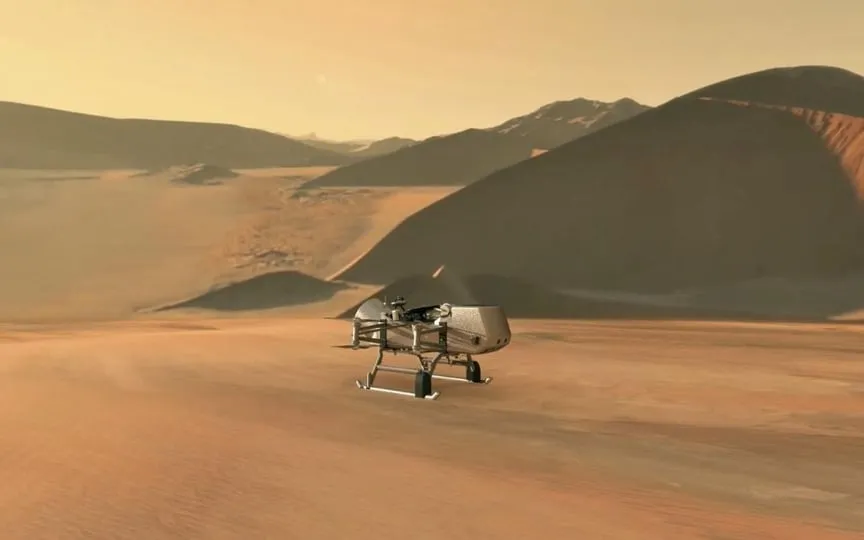NASA to Make Historic Achievement on Saturn’s Moon Titan with Dragonfly Mission
NASA is preparing for an extraordinary expedition as it gears up for the Dragonfly mission, which aims to investigate Titan, Saturn’s mysterious moon. The mission is scheduled to launch in June 2027 and is expected to arrive at its destination in 2034. Dragonfly stands out as one of the most groundbreaking endeavors in the field of planetary exploration. So, what makes this mission so exceptional? Let’s delve into the details of this remarkable undertaking.
A groundbreaking mission
Dragonfly is an exceptional first in many respects. In particular, it marks the rotorcraft’s maiden voyage on an extraterrestrial body. In addition, it utilizes nuclear power, an innovative concept for exploring the moons of the outer planets. According to a Space.com report, Dragonfly will be the first mission of innovation to navigate an entire scientific payload through the thick atmosphere surrounding Titan.
We are now on WhatsApp. Click to join.
Mysteries of Titan
The primary objective of the Dragonfly mission is to delve into Titan’s secrets. The researchers plan to check the habitability of the moon and look for clues about past or present life. To achieve this, Dragonfly will map a route to various locations on Titan, carefully chosen to provide the most detailed information possible about the moon’s potential habitability.
A crucial part of Dragonfly’s mission is to study the chemical processes on Titan that could give rise to life. Titan, with its abundant organic molecules and liquid methane and ethane lakes, offers a unique environment for such studies.
Dragonfly searches for traces of past or present life on Titan. This mission is particularly intriguing because Titan has liquid water beneath its surface, which we understand to be an essential ingredient for life. So Titan becomes a safe haven where life may have flourished in the past or even exist today.
Dragonfly Drone
Dragonfly is a quadcopter drone with a mass of 400-450 kg, making it roughly comparable in size to the largest Mars rovers. It propels itself with eight rotors attached to four pairs of outriggers on the frame. The Dragonfly rotorcraft, which can reach a speed of about 10 meters per second and rise to a height of 4,000 meters, resembles a drone in its operation. This adaptive craft will explore various locations on Titan to assess habitability and look for signs of life.
Origin of Earth
So why is NASA sending Dragonfly to Titan, Saturn’s largest moon? The answer lies in Titan’s unique features. It has a thick, Earth-like atmosphere, four times denser than Earth. Titan essentially offers a glimpse into Earth’s early history. By studying conditions on Titan, the Dragonfly mission may reveal valuable insights into the origins of life on our own planet.




